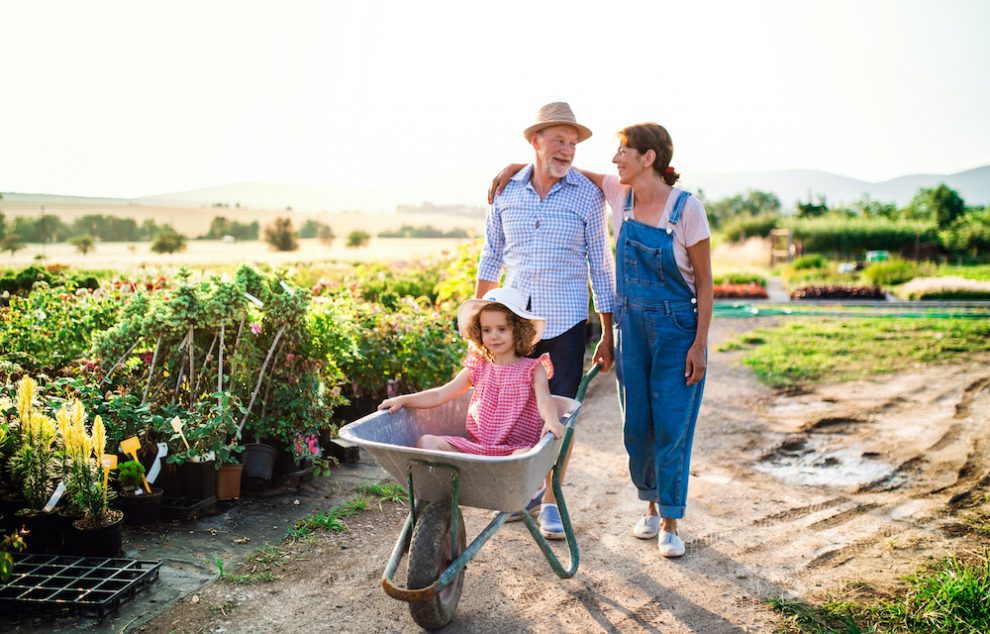As we say goodbye to summer, it’s time to take a look at your garden to see what needs refreshing after a hot few months. Plus, it’s a great time to make fashionable changes. To keep your garden vibrant and on trend, Kimberley Moon, a Horticulturist at Semken Landscaping, shares her top autumn garden trends
There are some trends that I’ve noticed over the course of 2019 that will run strong into 2020. 2020 is a year of sustainable choices including natural stone surfaces and waterwise gardening with a fun inclusion of potted colour in smaller spaces.
READ MORE GARDENING ARTICLES: Getting rid of weeds
That said, great gardening is not based on seasonal trends, and although things will swing in and out of favour, a well thought out, well prepped and well-maintained garden will always be admired.
- Autumn Colour
Nothing says autumn like the turning of leaves from lush green to fiery reds and yellows, particularly in the southern states. Most gardens we install include at least one feature deciduous tree to add some seasonal interest and to take advantage of the autumn colours. We have a range of trees that we would consider our favourites for suburban gardens but there are a couple that are total standouts for us as they tick all the boxes. We love using small deciduous trees in our landscapes as they fit into gardens of all shapes and sizes and the ones listed here have the added bonus of being tough and providing stunning autumnal colours.
Our Top 3 Autumn Garden Trends Small Deciduous Trees:
- Lagerstroemia ‘Tuscarora’
- Acer palmatum
- Cercis ‘Forest Pansy’
- Waterwise Gardening
Managing the water usage in your garden becomes much easier with a few steps taken over the autumn period. We always prepare soil with compost, wetting agents and any required soil amendments prior to planting which will help the health of the garden long term and contribute to a quicker establishment period and less water required long term as a result. If your garden is already established but you are losing water to runoff and compacted soil, autumn is a great time to add some much-needed compost to the garden beds.
A great money saving tip is to utilise some free mulch and compost from your deciduous trees. Top up areas that need some added compost or mulch cover with all the excess autumn leaves raked from the lawns and paths and these will break down over winter and provide added humus and natural water retention to your soil.
Another way to reduce excess water use in your garden is to choose appropriate plants for your climate and your region. A bit of research or a chat to your local nursery will reveal what plants work well in your area on limited water and from there you can choose what suits your style and garden aesthetics.
- Potted Colour
Potted colour has had a huge resurgence this year and with space for garden beds being at a premium, pots are a fantastic way to add interest and colour to your garden, patio or courtyard. The possibilities are endless when it comes to pot design, but we love adding pots in clusters to client’s gardens, which means you end up with various heights, colours and textures. Space permitting you may add a large pot at the back of your cluster with a small feature tree or shrub, a mid-sized pot to contain a structural element and the smaller pot at the front to contain something pretty such as seasonal annual colour.
For a fantastic autumn display add a small cultivar of Japanese maple, an oak leaf hydrangea and some pansies or violas for a pop of annual colour. Dichondra Silver falls is always a winner when planted to drape and soften the sides of the pots.
And if you are really limited on space you could play with a smaller, shallow pot on your outdoor dining set planted with a mounding moss for contemporary feel.
- Buxus Balls & Structural Elements
We are seeing structural elements such as topiary balls being used across the board this autumn and at the moment, we are using them as anchoring elements in a softer and more flowing landscape rather than the traditional formal application of the past. Mix Buxus balls in varying sizes in with some flowering perennials and floaty grasses as a modern and fun take on a traditional element.
Tip: Westringia or Teucrium make a fantastic waterwise and tough alternative to Buxus balls and can be trimmed to create the same silhouette in the garden.
- Natural Stone Surfaces
Natural stone surfaces are a timeless inclusion to any landscape, but are worth a mention with sustainability in the forefront of our minds in 2020. We are seeing a return to classic and timeless landscape design over fashion forward trends and choosing hard wearing and neutral coloured paving like bluestone will see your landscape carry over through many decades.
“Natural stone surfaces are a timeless inclusion to any landscape, but are worth a mention with sustainability in the forefront of our minds in 2020”























Add Comment